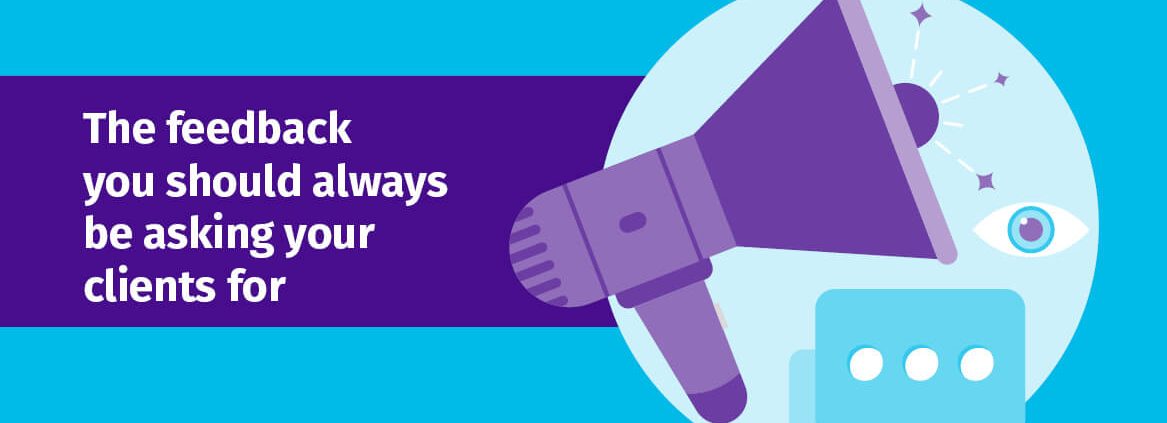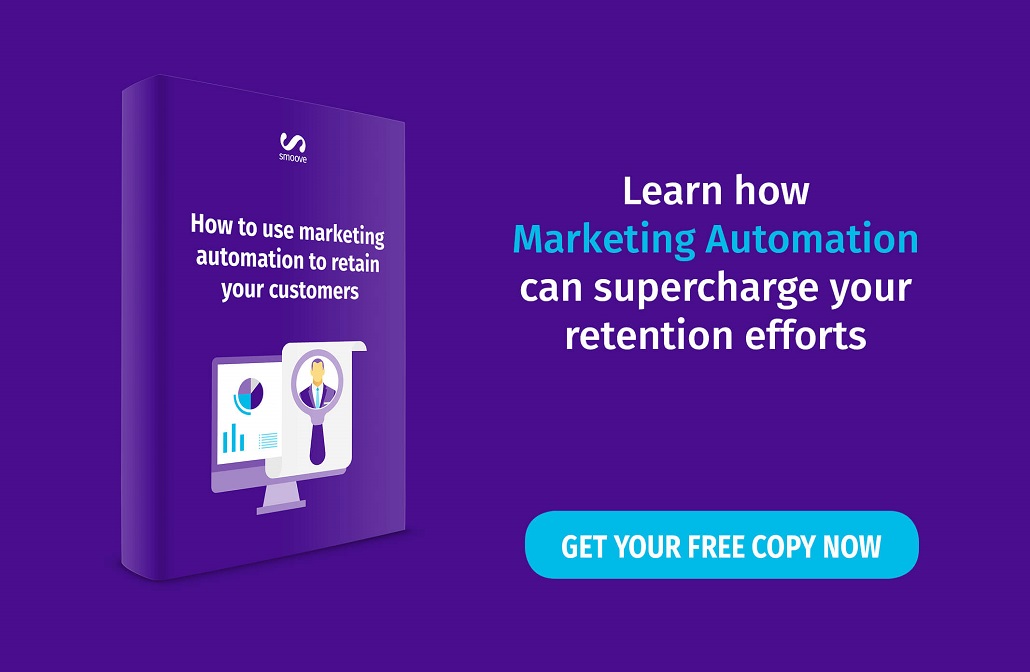The feedback you should always be asking your clients for
Successful companies out there regularly collect and analyze the feedback they receive from their customers and are very well aware of the important role it plays both in terms of sales and in building a better relationship with their customers.
Studies show that 70% of companies that deliver excellent customer experience regularly use customer feedback to improve the ways they do business.
Keeping communication channels open and acting on the feedback can do wonders for the customer’s experience, but it also enables you to collect valuable data you can later employ in almost every aspect of your business. Ignoring the feedback you receive and not acting on it can result in customer churn and do serious harm to your business.
Also, when customers see how seriously you’re taking their opinions, it’s much easier to retain and convert them into loyal customers, which is the ultimate goal of every business out there.
After knowing all this, the real question we need to ask ourselves is how to act on the different types of feedback we receive? And what should we ask our customers in order to receive a comprehensive and valuable feedback for them?
Types of customer feedback and how to act on it
Regardless of if you’re working for a startup or a well-established and successful company, you can expect to receive different kinds of feedback:
Negative feedback
Nobody likes receiving negative feedback, but once it’s there, you need to immediately show your customers you’re listening to what they have to say. Welcome and acknowledge negative feedback by showing gratitude for every type of response, even if it’s something you can’t act on.
Make clear that you understand them and share how you’re planning to resolve their issues, such as in the Honda of Thousand Oaks example bellow.
Positive feedback
Never underestimate the power of acting on positive feedback as well. Your most satisfied and loyal customers are those who will give you the most honest feedback if something is wrong with your products or services.
Only a short look at this example from McDonalds can give us an idea how to act on the positive feedback (and even ask for more of it!).
Ignoring the positive feedback and taking it for granted can harm your business as well, so make sure you express your appreciation in a timely and polite manner.
Constructive feedback
This type of feedback is probably the most valuable and can really help you shape your business better than anything else to make it more customer friendly. Even though you will not be able to resolve the issues right away, you should respond quickly and express your gratitude such as in this example by Carnival Cruise.
Gather ideas, problems and questions received and analyze it in order to design a realistic roadmap of solutions focusing both on a short-term and long-term goals of your actions.
Be aware that you will not be able to fulfill every request you receive and that you will sometimes need to find other ways to keep your customers satisfied. These can be different rewards, invitations to join your loyalty programs and other retention incentives.
Questions to ask
If given an opportunity, customers will reveal what they love, what they hate and what they want to see improved. In order to get this valuable information, you will need to ask the following:
How did you enjoy your last experience with us?
Asking your customers this question right after their purchase will help you to both quickly resolve any possible issue they may have and show them you actually appreciate what they have to say about your products and services.
If there’s one thing you could change about it, what would it be?
This can reveal not only what your customers feel about your business, but also their expectations from you. This is how you can often find out what your competition does more efficiently and also help you set future strategies according to your customer’s wishes.
Is there anything else we should know?
Even the most successful businesses cannot keep track of everything their customers experience throughout the buying process. Sometimes the issue they have is not directly related to you, but to other companies and services you do business with. These can be, for example, related to your website performance, delivery services or something else you may have overlooked.
How likely would you recommend us to a friend?
When you ask direct questions, you will get the direct answers, but there is no harm in measuring the general mood and/or level of your customer’s satisfaction. When asking a rating question you can also additionally ask them they rated your business so high (or low) to gather extra feedback and discover the customer’s rationale. It is proven that the 1-5 scale performs best, but if needed you can change it to 10 points.
What you can do with the feedback
After understanding how to act on the different types of feedback you receive and which questions to ask, your next step is to actually use the gathered data to increase sales and improve your customer’s experience. This, of course, cannot be achieved overnight, but thanks to marketing automation platforms such as smoove, we may have a few near-instant solutions for getting closer to those goals.
Having in mind that the amount of information we receive can be very extensive, we need to ask ourselves how to simplify the response processes.
This is where marketing automation steps in. Adjusting your marketing automation based on the feedback you received will help you reach different target groups and accommodate their different needs and expectations. This can be done in three simple steps:
Step 1: Segment the customers based on the feedback
If your customers aren’t getting specific responses to the issues raised in their feedback, they will, sooner or later, stop doing business with you. Delivering relevant content to the different groups of customers is much easier to achieve if you segment your audience and create different email lists based on the commonalities you’ve found in their feedback.
Have in mind that, without the segmentation, email personalization is nothing more than an empty phrase.
Step 2: Create the personalized content
After creating those separate email lists, you need to set up automated, yet personalized emails and newsletters based on the information collected from the feedback. For example, if your customers think you could provide them with more product information, you can reach out to them with a strategically crafted newsletter that offers the requested information on your products or services.
Also, a personalized email is a great tool for announcing the changes you have made to accommodate their needs, say thank you and ask for more feedback on a specific issue, such as in this example of an email sent out by Videoblocks.
Step 3: Open other channels of communication
Along with targeted emails and newsletters, you will also need to offer other, more instant solutions to those who will not wait for your next monthly or weekly newsletter. For example, if people requested better after sales care, you can offer them an automated solution straight after they made the purchase.
SMS is also a great way to reach your customers instantly after they made a purchase. Automated text messaging, but also new instant features such as live chat and social media chatbots can provide your customers with ongoing customer support and prevent them to look for answers on your website or elsewhere.
Cosmetics giants Sephora excel in their customer service via chatbots, such as shown in the example below.
Wrap-Up
A well-gathered and the well-analyzed customer feedback is one of the most convenient ways for improving our products and services and measuring the general satisfaction with our brand. It helps us save money and time, design better marketing campaigns and make better business decisions. In order to get this right, we need to act appropriately to every kind of feedback we receive, regardless of it being positive, negative and/or constructive.
Ask your customers to provide you with the specific feedback related to their experiences and level of satisfaction with your business, but also to reveal if there is something you need to change or may be overlooking.
Once gathered, use the information you received via feedback and automate your responses with the help of marketing automation tools offered by platforms such as smoove. These are email segmentation, personalized emails and newsletters, but also more instant solutions such as text messages and chatbots.






Leave a Reply
Want to join the discussion?Feel free to contribute!